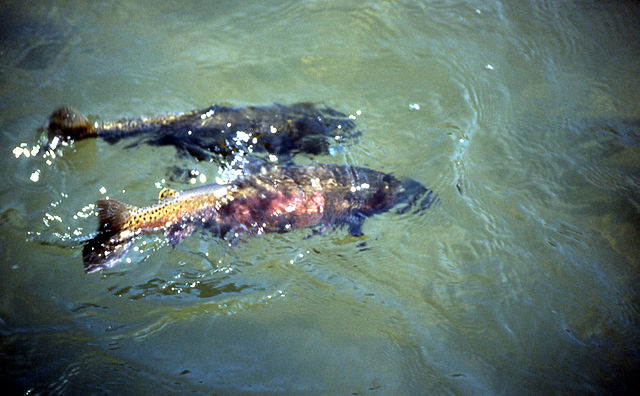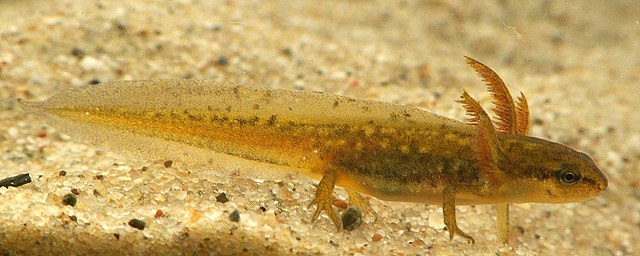The anamniotes are an informal group of craniates comprising all fishes and amphibians, which lay their eggs in aquatic environments. They are distinguished from the amniotes, which can reproduce on dry land either by laying shelled eggs or by carrying fertilized eggs within the female. Older sources, particularly before the 20th century, may refer to anamniotes as "lower vertebrates" and amniotes as "higher vertebrates", based on the antiquated idea of the evolutionary great chain of being.
Image: Cut throat spawning 15271
Image: Triturus Vulgaris Larva
Anamniote eggs from a frog.
A fish is an aquatic, anamniotic, gill-bearing vertebrate animal with swimming fins and a hard skull, but lacking limbs with digits. Fish can be grouped into the more basal jawless fish and the more common jawed fish, the latter including all living cartilaginous and bony fish, as well as the extinct placoderms and acanthodians. Most fish are cold-blooded, their body temperature varying with the surrounding water, though some large active swimmers like white shark and tuna can hold a higher core temperature. Many fish can communicate acoustically with each other, such as during courtship displays.
Fish
Dunkleosteus was a giant Devonian armoured placoderm, c. 400 mya.
Largest: whale shark
Smallest: e.g. P. progenetica







